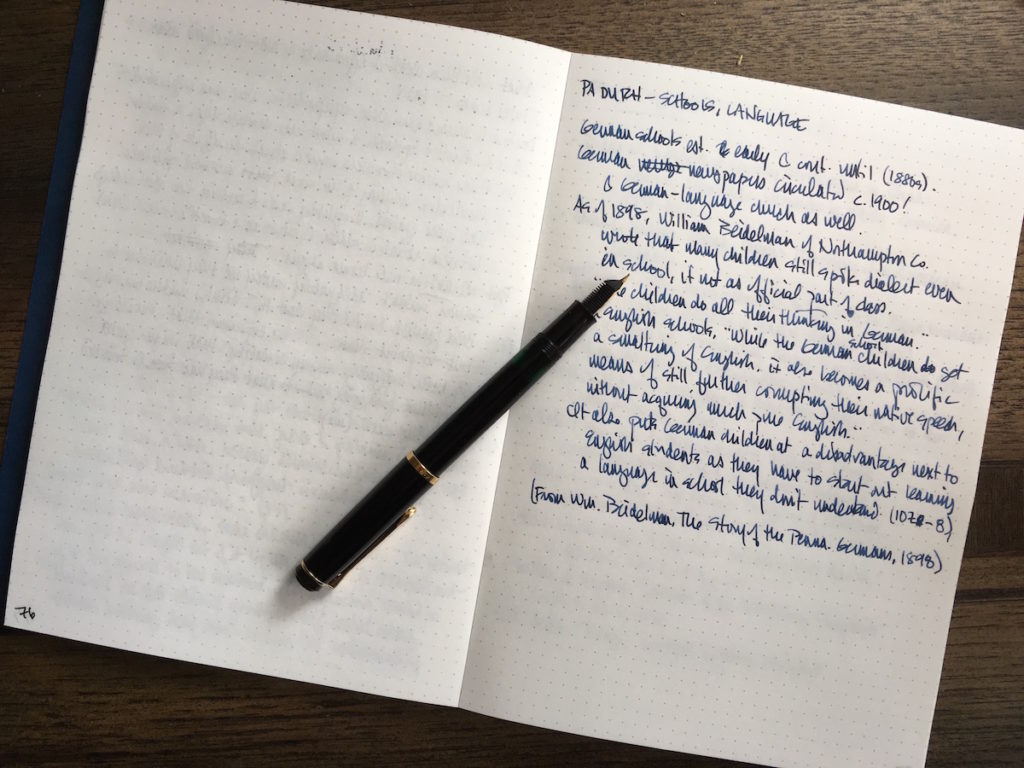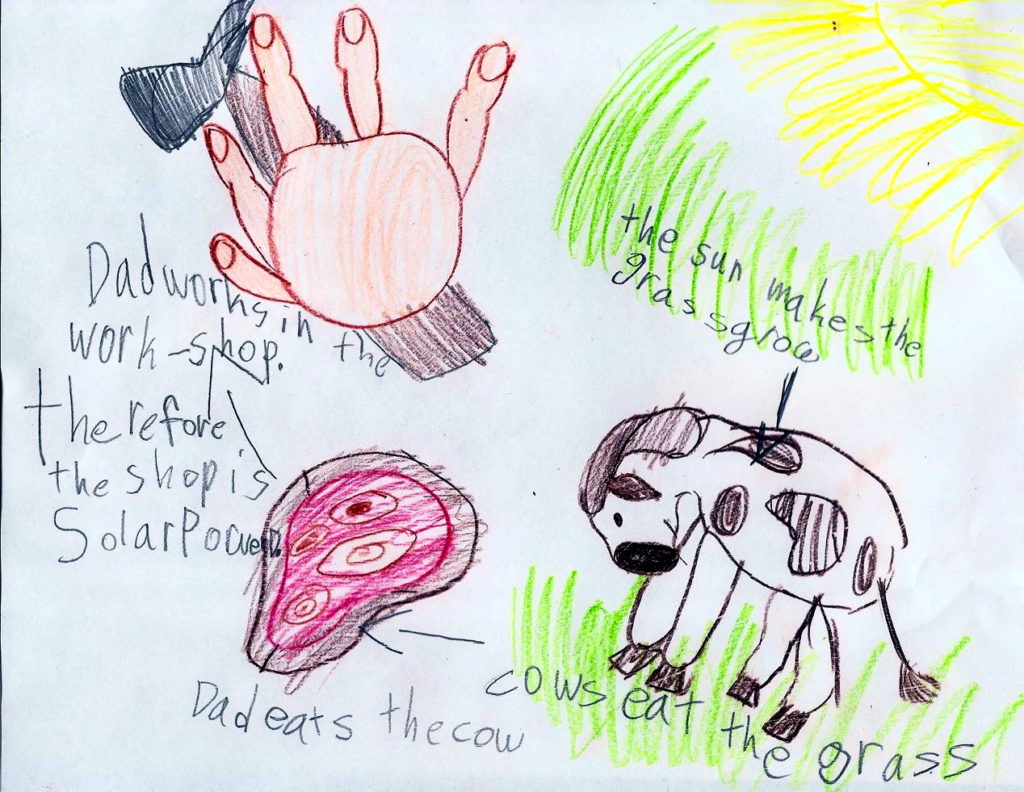You can never tell how big or how serious a trend is just from reading it about it in the newspaper, so when Melissa Korn wrote recently in the Wall Street Journal that college professors are increasingly banning laptops from their classrooms, I had to ask, what kind of growth and what kind of absolute numbers are we talking about? Like, two percent? Three guys the reporter ran into at a bar? But I’m intrigued, and maybe even gladdened, if there’s any trend that direction at all, because the more I’ve considered the ways I read, write, listen, and take notes, the less optimistic I am about the role of computers in those activities.
For example: I’ve been researching a new novel that takes place in Pennsylvania during the Civil War, and so I’m reading and digging widely — about the war, Pennsylvania German culture and language, the locations where the action occurs, farming practices, and so on. Some of this gets pretty specific: How would you build a fence, from start to finish, relying on your Pennsylvania woodlot and hand tools? What would your mobility be like with an unrepaired ACL tear? I started out from old habit doing historical research using Zotero to take notes, but while traditional formal notetaking practice is great for academic citations and bibliographies, it’s cumbersome if you’re writing fiction and all you need is plausibility. And while the ability to keyword-search a two-year corpus of research is tremendously useful if you’re writing a dissertation or a monograph, most of what I find myself asking comes up as I’m writing and is used almost immediately. Not to mention that if I’m reading a book while I wait to pick up my daughter from dance class, I have to carry my laptop with me.
So a few weeks ago I switched to using a bound notebook, hand-numbering the pages, and indexing topics in the front. It’s simpler and more convenient. But it’s also improved my research in a couple of interesting ways. For one thing, when I’m writing (which I do on a laptop, for very different but equally practical reasons), I don’t have to switch to another app to check my notes; I can flip through my notebook on my desk. Why is that better? Because I don’t lose my place in what I’m writing, and I’m not tempted to, say, check my email. The notebook doesn’t shift my focus.

I also find, as I’ve found in any number of other tasks, that the body plays a role in memory. I am often quicker recalling where in the notebook a bit of information was, and in fact where on the page it was, than I am in remembering what keyword I used to index it. Even better, I’m more likely now to find that I don’t have to refer to my notes at all, because the very act of writing something down — and I mean writing it by hand with a pen — helps commit it to memory in a way that typing it doesn’t. (Let alone cutting and pasting.)
